Recommended for high traffic areas, ceramic and porcelain tile flooring is a great addition to your home. An excellent flooring material since they handle moisture well, durable and also comes in various styles, sizes and colors that would complement, highlight and accentuate any place in your property.
Planning to install ceramic or porcelain tiles DIY? Read these basic steps in preparing for installation. Keep in mind this requires some skills and certain tools so better think twice if you’re really gonna do it or leave it to the more trained hands of flooring professionals.
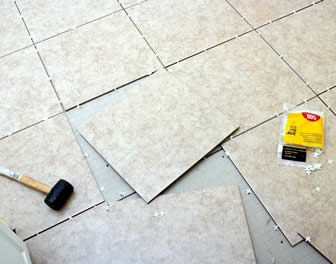 Speaking of tools, here are the ones needed in preparing the subfloor:
Speaking of tools, here are the ones needed in preparing the subfloor:
- cement backerboard (underlayment)
- polymer modified thin-set mortar
- notched trowel
- galvanized roofing nails or corrosion resistant screws
- drill and drill bits
- saw
- alkali-resistant cement board seam tape
- utility knife
- tape measure
- pencil
- chalk line and square
- knee pads, gloves and safety glasses
- patch and leveler
- tile spacers
- ceramic or porcelain flooring tiles
So how many ceramic or laminate flooring tiles do you need? To get an estimate measure the length and width of the room where you plan to install the flooring tiles multiply both to get the square footage you need. Finally, add 10-20 per cent more to cover for mistakes and replacements. Some stores have calculators included in their websites.
 Remember these criteria that should be met before porcelain or ceramic tile flooring is installed: the subfloor should be 1) uniform and level; 2) in appropriate thickness; and 3) in overall good condition. Before proceeding with the preparation, it won’t hurt to check out the manufacturer’s instructions to make sure you take all the necessary steps. Also check out the building codes in your area to avoid any inconvenience.
Remember these criteria that should be met before porcelain or ceramic tile flooring is installed: the subfloor should be 1) uniform and level; 2) in appropriate thickness; and 3) in overall good condition. Before proceeding with the preparation, it won’t hurt to check out the manufacturer’s instructions to make sure you take all the necessary steps. Also check out the building codes in your area to avoid any inconvenience.
Next, checkout your subfloor. some materials, like vinyl are suitable for tile installation others however would have to be removed. Baseboards and trips would also need to be removed. Put the cement backerboard and a piece of tile against the door casing and mark their height. Clear out that space to make sure the flooring would fit. Be sure to cut the door too.
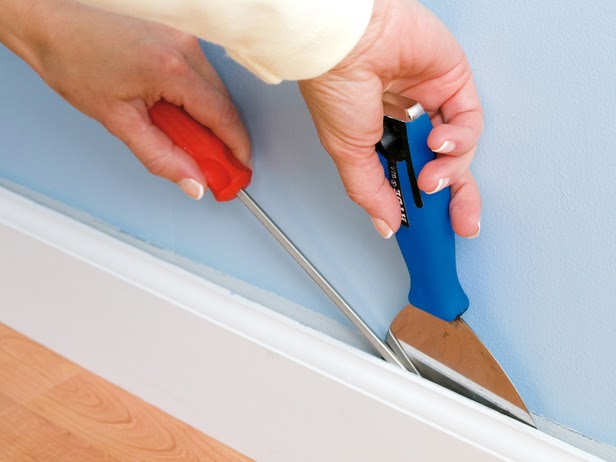 Another thing to consider is the resulting height of the flooring after installation. This will be crucial if you are planning to install the tile in the bathroom as the added elevation increases the chances of water spilling out. Keep in mind the height of furniture and other stuff as it is possible that the resulting floor will be more or less an inch higher.
Another thing to consider is the resulting height of the flooring after installation. This will be crucial if you are planning to install the tile in the bathroom as the added elevation increases the chances of water spilling out. Keep in mind the height of furniture and other stuff as it is possible that the resulting floor will be more or less an inch higher.
Check if the subfloor is level before laying down the backerboards to make sure tiles are protected from unnecessary pressure. Use the patch and leveler following product directions. Be sure to allow the right time for the leveling compound to cure. Another popular technique used to ensure that the subfloor is level is by screeding. This application was initially used for commercial installations but are now also widely used in homes. Here, when there are high spots, the rest of the flooring is then raised to make it level and even.
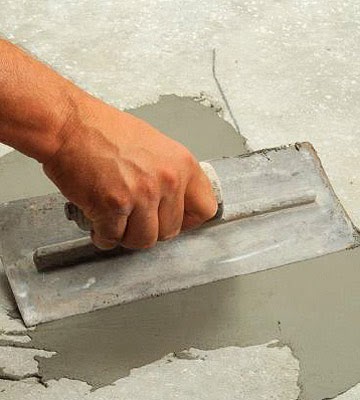 When the subfloor is level, we are now ready to install our backerboards that will serve as a foundation for our ceramic or porcelain tile flooring. Apply the thin-set mortar on the subfloor, make sure to spread them in sections and its best to begin doing so in a corner. Lay down the backerboard and secure it in place with using corrosion resistant screws.
When the subfloor is level, we are now ready to install our backerboards that will serve as a foundation for our ceramic or porcelain tile flooring. Apply the thin-set mortar on the subfloor, make sure to spread them in sections and its best to begin doing so in a corner. Lay down the backerboard and secure it in place with using corrosion resistant screws.
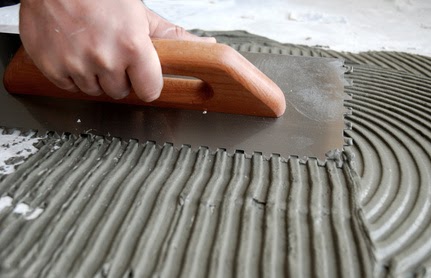 If you need to cut the board, simply score it with the utility knife and snap it. Be sure to cut it on the backside after it snaps to make sure you don’t damage the mesh.
If you need to cut the board, simply score it with the utility knife and snap it. Be sure to cut it on the backside after it snaps to make sure you don’t damage the mesh.
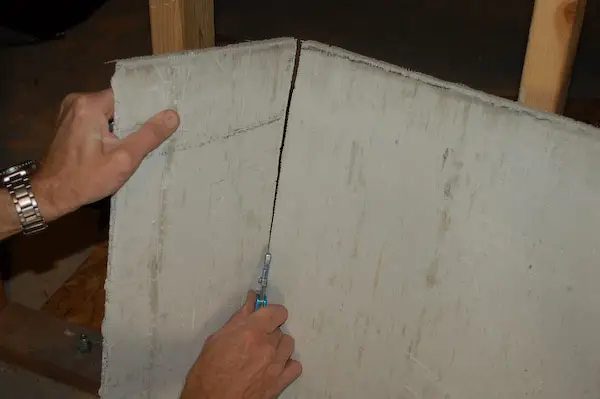 Continue with the thin-set application and backerboard layout until you have covered the entire room.
Continue with the thin-set application and backerboard layout until you have covered the entire room.
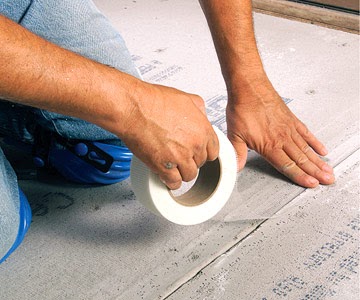 Cover the joints with cement board seam tape and apply mortar.
Cover the joints with cement board seam tape and apply mortar.
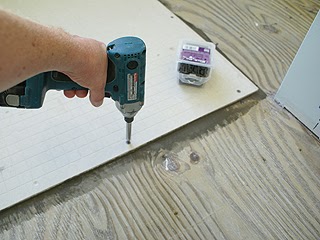
The next step is to mark our guidelines to ensure that the layout is square all throughout. To do this, mark the center of the 2 opposing walls in the room and snap a chalk line. Do the same for the adjacent walls to form a cross. Check if their intersection is square. This would be sufficient if the room is small. You can now layout the tiles, following the guidelines to see how they would fit, using tile spaces in between to make sure the distance is even. Don’t forget to leave the recommended expansion gap beside walls and cabinets. This is known as the dry layout.
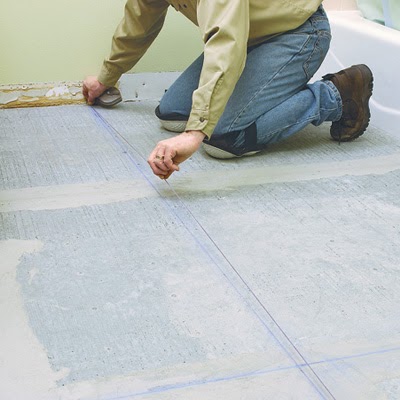 If the dry layout would leave a distance less than half the tile’s with at the end on one wall, move the layout by first adjusting the guidelines and leaving equal distance on each side.
If the dry layout would leave a distance less than half the tile’s with at the end on one wall, move the layout by first adjusting the guidelines and leaving equal distance on each side.
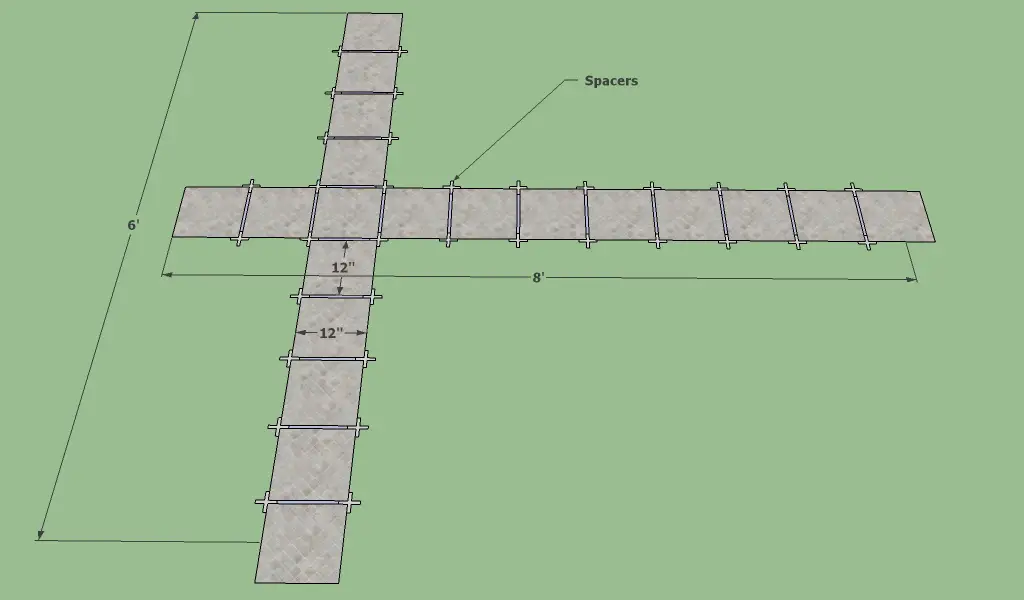 For larger areas, it is ideal to draw a grid of 3-foot squares across the room to make sure the layout will be even all throughout. Working in smaller section will make it more accurate and easier to make adjustments when needed.
For larger areas, it is ideal to draw a grid of 3-foot squares across the room to make sure the layout will be even all throughout. Working in smaller section will make it more accurate and easier to make adjustments when needed.
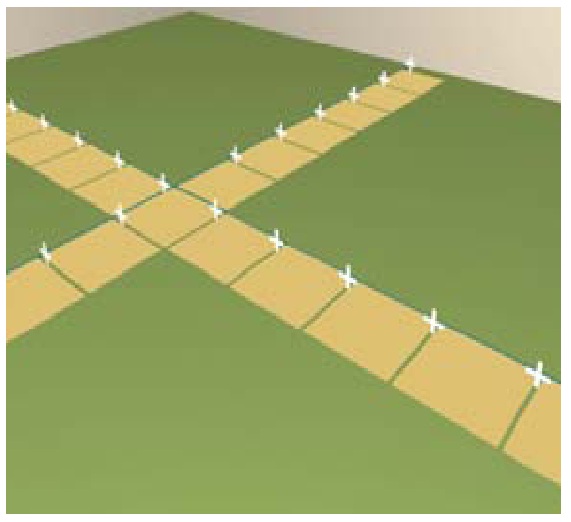 With the correct guidelines and a dry layout, we were able to see how the installation would look like. We are now ready to install the ceramic or porcelain tile flooring
With the correct guidelines and a dry layout, we were able to see how the installation would look like. We are now ready to install the ceramic or porcelain tile flooring

